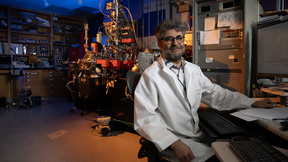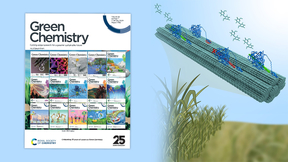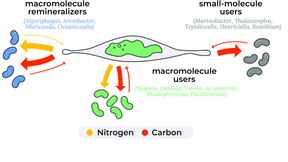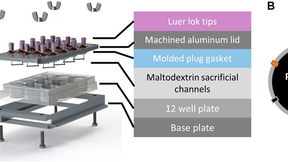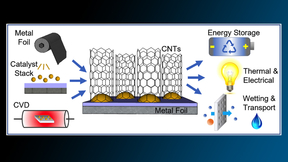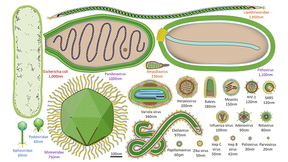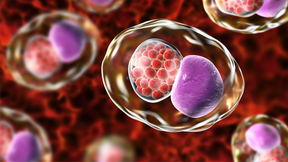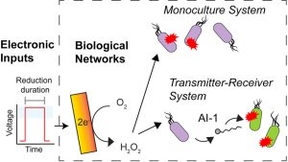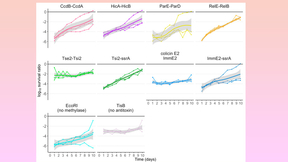Back
The severely invasive nature of combat trauma creates massive regions of injury, colonization and infection, requiring specialized diagnostic and aggressive therapeutic approaches. Previous reports indicate an estimated occurrence of wound infections in 18%–25% of combat-related injuries. Hindering wound recovery are multidrug-resistant microorganisms, which have been…
Lawrence Livermore National Laboratory (LLNL) has joined forces with Precision Neuroscience Corporation (Precision) to advance the technology of neural implants for patients suffering from a variety of neurological disorders, including stroke, spinal cord injury and neurodegenerative diseases such as Lou Gehrig's disease. Under the three-year collaboration, outlined in a…
Ammonia-oxidizing microorganisms (AOM) use ammonia for energy and account for the annual oxidation of approximately 2.3 trillion kilograms of nitrogen in soil, freshwater, the subsurface and man-made ecosystems. But one major question that has remained unanswered for decades is how different AOM species coexist in the same environment: do they compete for ammonia or…
A Lawrence Livermore National Laboratory (LLNL) scientist is part of a research team shedding new light on how to access the sugars locked up in plant materials in order to convert byproducts into new feedstocks for production of fuels, materials and chemicals. Converting grasses, weeds, wood and other plant residues into sustainable products normally produced using…
Two graduate students have earned Department of Energy (DOE) Office of Science Graduate Student Research (SCGSR) Program awards to perform their doctoral dissertation research at Lawrence Livermore National Laboratory (LLNL). The prestigious award helps cover living expenses and travel for 60 students from universities across the nation. Their proposed research projects…
On Thursday, August 24, a dozen LLNL postdocs presented in the annual Postdoctoral Research Slam, answering the question “Why is my research important?” in only three minutes. Each talk was then evaluated by LLNL leadership, awarding first and second place to PLS postdocs Brandon Zimmerman and Aditya Prajapati, respectively. As a bonus, the attending audience voted on…
Osteosarcoma (OS) is the most common primary malignant bone cancer in children and adolescents. While many other cancers now have promising therapeutic advances, treatment options for OS have remained unchanged since the introduction of standard chemotherapeutics and offer less than a 25% five-year survival rate for those with metastatic disease. Now, Lawrence Livermore…
Lawrence Livermore National Laboratory (LLNL) scientists have found that bacteria can help algae make carbon-neutral biofuels or draw down additional carbon from the atmosphere if the conditions are just right. The team used LLNL’s nanoSIMS to understand and quantify the role of the algal microbiome in processing algal carbon (C) and nitrogen (N). The research appears in…
For the past several decades, synthetic biologists have sought to genetically engineer microorganisms for a wide range of application—including therapeutics discovery and delivery, drug manufacturing, agricultural yields, biofuel production, mineral extraction, and waste degradation. This is achieved through the design of genetic circuits, which are made up of DNA parts…
Colorectal cancer (CRC) — cancer of the colon or rectum — is the third-most common cancer in both men and women in the United States and the second-most common cause of cancer-related death in developed countries. Although surgery is highly successful for patients with a localized disease or disease confined to a narrow region (stages I–III), a total of 60% of CRC patients…
The irreplaceable roles of rare-earth (RE) elements in ubiquitous modern technologies ranging from permanent magnets to light-emitting diodes (LED) and phosphors have renewed interest in one of the grand challenges of separation science—efficient separation of lanthanides. However, the separation of these 15 elements is complicated due to their similar physicochemical…
Carbon nanotubes (CNTs) provide extraordinary electronic, thermal, mechanical, and transport properties, among many other benefits. Vertically aligned CNT (VACNT) forests have promising potential applications ranging from energy storage to multifunctional fiber production. While CNTs are traditionally made on substrates such as silicon, the process is not compatible with…
Carbon nanotubes (CNTs) are known for their high tensile strength and electrical and thermal conductivities, making them ideal for a wide range of consumer applications—energy storage, electronics, etc. However, current approaches to CNT synthesis are limited in their ability to control the placement of atoms on the surface of nanotubes. Some of these limitations stem from…
During future missions beyond low Earth orbit (LEO), such as those planned to the moon, near-Earth asteroids, and Mars, astronauts will face poorly defined health risks as a result of exposure to the complex space ionizing radiation (IR) environment. In fact, the gastrointestinal (GI) system is documented to be highly radiosensitive with even relatively low dose IR…
On Earth, viruses are abundant and an integral part of life. However, very little is known about them outside human health contexts, especially in areas related to space. Understanding the role viruses play on Earth and how they interact with their hosts in extreme environments can better inform human spaceflight missions (environmental control, life support systems, and…
One of the fundamental challenges in computational modeling is to balance the trade-off between the length and time scales that need to be simulated and the corresponding computational costs. Relevant time scales are typically determined by a phenomena of interest, e.g., a protein’s activation or a chemical reaction, whereas length scales are usually chosen based on the…
Lawrence Livermore National Laboratory (LLNL) and University of California, Davis researchers are assisting Arizona State University with a new laser facility that will use ultrafast pulsed X-ray beams to study biological processes, materials and other research at the atomic level. In March, the National Science Foundation announced that it was awarding $90.8 million to…
Chlamydia trachomatis is the most common bacterial sexually transmitted pathogen in the world and can cause ocular, respiratory, and gastrointestinal infections. As the number of chlamydial infections continues to increase, there is a growing and urgent need for the development of a safe and efficacious vaccine. In a new study, researchers from LLNL and UC Davis tested…
Cell death and lysis (breakdown of a cell) play an important role in a wide array of biological processes. Scientists propose that the genetic “programming” of microbial cell lysis could provide new methodologies for biomanufacturing and biocontainment. To this end, LLNL and collaborators at the University of Maryland are focused on developing robust and generalizable…
Synthetic biology promises to sustainably produce commodity chemicals, treat human disease, steward the environment, and sustain agriculture. Each of these tasks exploit genetically modified organisms (GMO), but the unintended release (referred to as “escape”) of GMOs or their recombinant (non-native) DNA could disturb native ecosystems in unpredictable ways…



